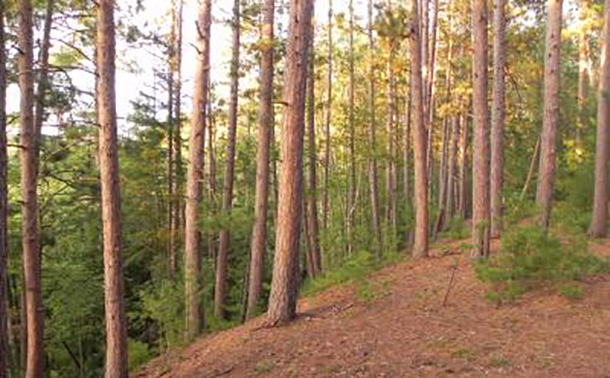

Credit: Stephen Handler, US Forest Service
HOUGHTON, Mich – Weather – In the last 100 years, Michigan has become warmer, with more rain coming through heavy downpours. Climate models suggest that the state will continue to warm and variability in precipitation patterns will increase, which will have consequences for the state’s forests. A new U.S. Forest Service report describes the potential risks and opportunities of climate change for forests in the eastern Upper Peninsula and northern Lower Peninsula.
More than 30 scientists and forest managers contributed to “Michigan Forest Ecosystem Vulnerability Assessment and Synthesis.” The study is part of the Northwoods Climate Change Response Framework, a collaboration of federal, state, academic and private partners led by the Forest Service’s Northern Institute of Applied Climate Science (NIACS). The report was published by the U.S. Forest Service’s Northern Research Station and is available online.
“Climate change information is often presented at scales that are hard to digest,” said Stephen Handler, the lead author for the vulnerability assessment. “This report is designed to give forest managers in Michigan the best possible science on effects of climate change for our particular forest ecosystems, so they can make climate-informed decisions about management today.”
The assessment evaluates the vulnerability of forest ecosystems within a 16.6-million-acre area in Michigan’s eastern Upper Peninsula and northern Lower Peninsula, about 70 percent of the state’s forested land cover. Topics covered include information on the contemporary landscape, past climate trends, and a range of projected future climates.
Climate impact models project a decline in northern species such as balsam fir, black spruce, white spruce, tamarack, jack pine, northern white-cedar, and paper birch. Southern tree species near their northern range limits may fare better. Species that may become more widespread include American basswood, black cherry, green ash, white ash, and white oak. Climate change is also expected to intensify several stresses that forests already face, such as damaging insect pests and diseases, drought, and wildfire.
While climate models vary on the degree of change and the regions where it will occur, by the end of the 21st century, northern Michigan is projected to experience a climate that is hotter with more variable precipitation, more moisture stress towards the end of the growing season, and less characteristic winter weather. In addition to conditions becoming less favorable for northern forest species and conditions improving for southern species, the vulnerability assessment finds:
Soil moisture patterns will change, with drier soil conditions later in the growing season.
Low-diversity systems are at greater risk.
Tree species and forest types that are better able tolerate disturbances such as wildfires, floods and pest outbreaks may be favored.
In the past 100 years, the mean annual temperature across the area studied in the vulnerability assessment increased 1.7 degrees Fahrenheit. From 1900 to 2011, mean annual precipitation increased by 4.9 inches across the assessment area and intense precipitation events became more frequent. In Michigan, there was a 180-percent increase in rainstorms of 3 inches or more between 1960 and 2011.
“Confronting the challenge of climate change presents opportunities for foresters and other decision-makers to plan ahead, manage for resilient landscapes, and ensure that the benefits that forests provide are sustained into the future,” said Michael T. Rains, Director of the Northern Research Station and the Forest Products Laboratory. “Forest Service science is delivering tools and data that will help managers in Michigan and throughout the nation meet this challenge.”










